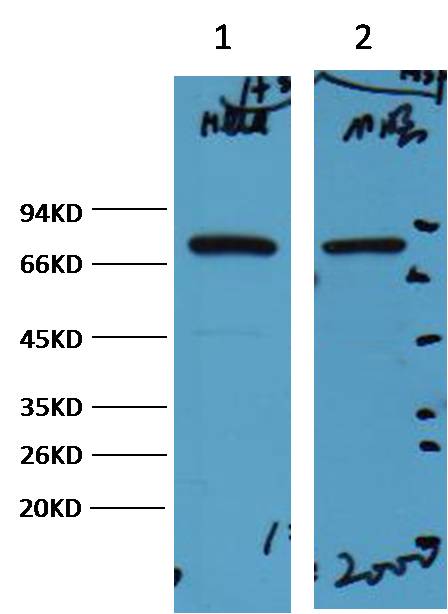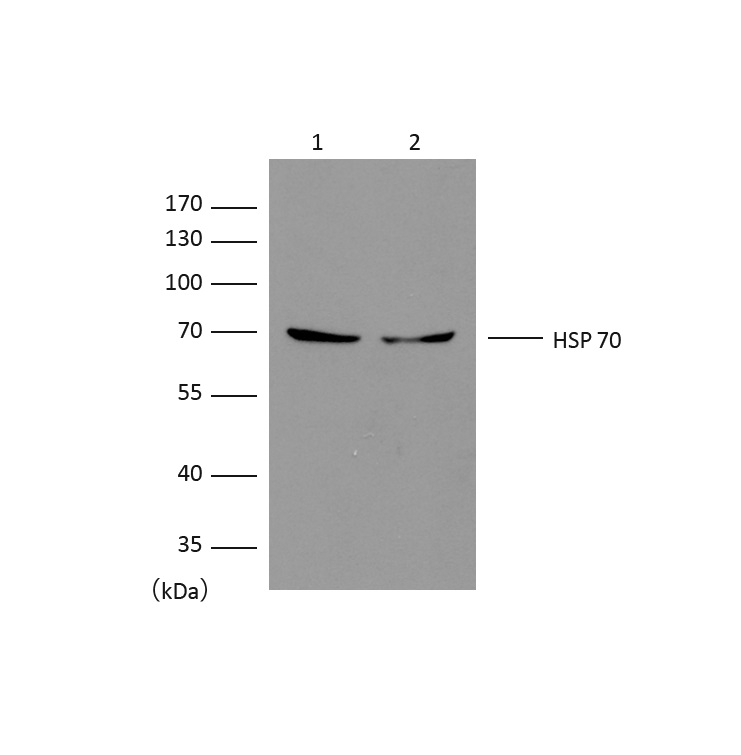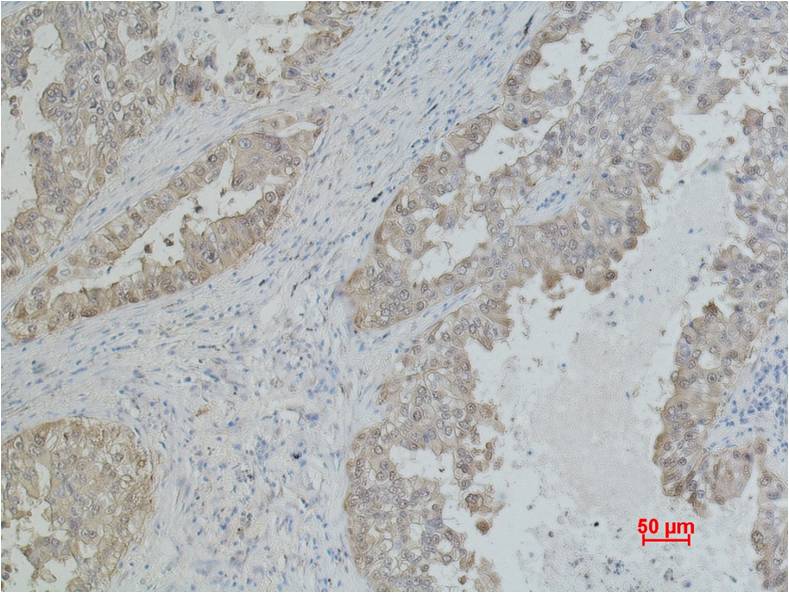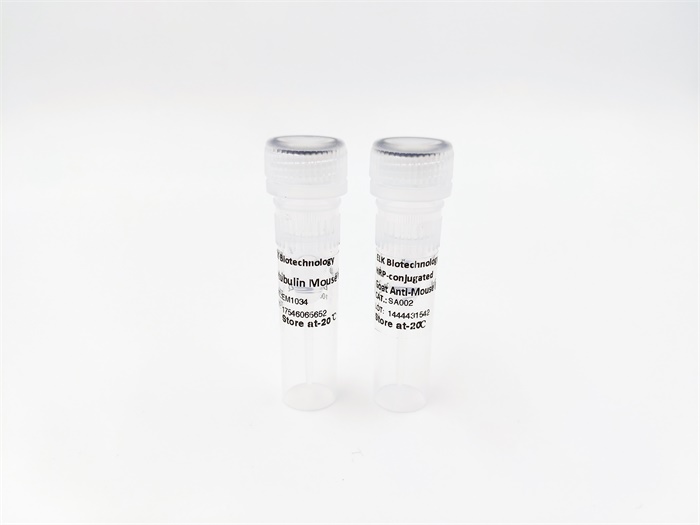| Product name: |
HSP70 Mouse mAb |
| Reactivity: |
Human, Rat, Mouse |
| Alternative Names: |
Heat shock 70 kDa protein 1/2, heat shock 70kDa protein 1A, HSP70, HSP70 1, HSP70 1/HSP70 2, HSP70 1A, HSP70.1/HSP70.2, HSP70I, HSP72, HSPA1, HSPA1A, HSPA1B |
| Source: |
Mouse |
| Dilutions: |
WB 1:1,000-2,000 IF 1:100-200? IHC 1:200-500 |
| Immunogen: |
Synthetic Peptide |
| Storage: |
PBS with 0.02% sodium azide and 50% glycerol pH 7.4. Store at -20°C. Avoid?repeated?freeze-thaw?cycles. |
| Clonality: |
Monoclonal |
| Isotype: |
IgG1 |
| Concentration: |
1mg/mL |
| Observed Band: |
70kDa |
| GeneID: |
3303 |
| Human Swiss-Prot No: |
P0DMV8 |
| Cellular localization: |
Cytoplasm |
| Background: |
The 70 kilodalton heat shock proteins (Hsp70s) are a family of ubiquitously expressed heat shock proteins. Proteins with similar structure exist in virtually all living organisms. The Hsp70s are an important part of the cell's machinery for protein folding, and help to protect cells from stress. Hsp70 is usually in an ATP bound state. Hsp70 by itself is characterized by a very weak ATPase activity, such that spontaneous hydrolysis will not occur for many minutes. As newly synthesized proteins emerge from the ribosomes, the substrate binding domain of Hsp70 recognizes sequences of hydrophobic amino acid residues, and interacts with them. This spontaneous interaction is reversible, and in the ATP bound state Hsp70 may relatively freely bind and release peptides. However, the presence of a peptide in the binding domain stimulates the ATPase activity of Hsp70, increasing its normally slow rate of ATP hydrolysis. |




 Western blot analysis of 1) Hela, 2) Mouse Brain, with HSP70 mAb diluted at 1:2,000.
Western blot analysis of 1) Hela, 2) Mouse Brain, with HSP70 mAb diluted at 1:2,000. Western blot analysis of?extracts from HeLa (Lane 1),MCF-7 (Lane 2), using HSP70 diluted?at?1:2,000.
Western blot analysis of?extracts from HeLa (Lane 1),MCF-7 (Lane 2), using HSP70 diluted?at?1:2,000. IF analysis of Hela with EM1042(Left) and DAPI (Right) diluted at 1:100.
IF analysis of Hela with EM1042(Left) and DAPI (Right) diluted at 1:100. Immunohistochemical analysis of paraffin-embedded Human Lung caricnoma using HSP70 (EM1042)Mouse mAb diluted at 1:500.
Immunohistochemical analysis of paraffin-embedded Human Lung caricnoma using HSP70 (EM1042)Mouse mAb diluted at 1:500.在線咨詢
技術(shù)支持




 下載說明 ①
下載說明 ①




